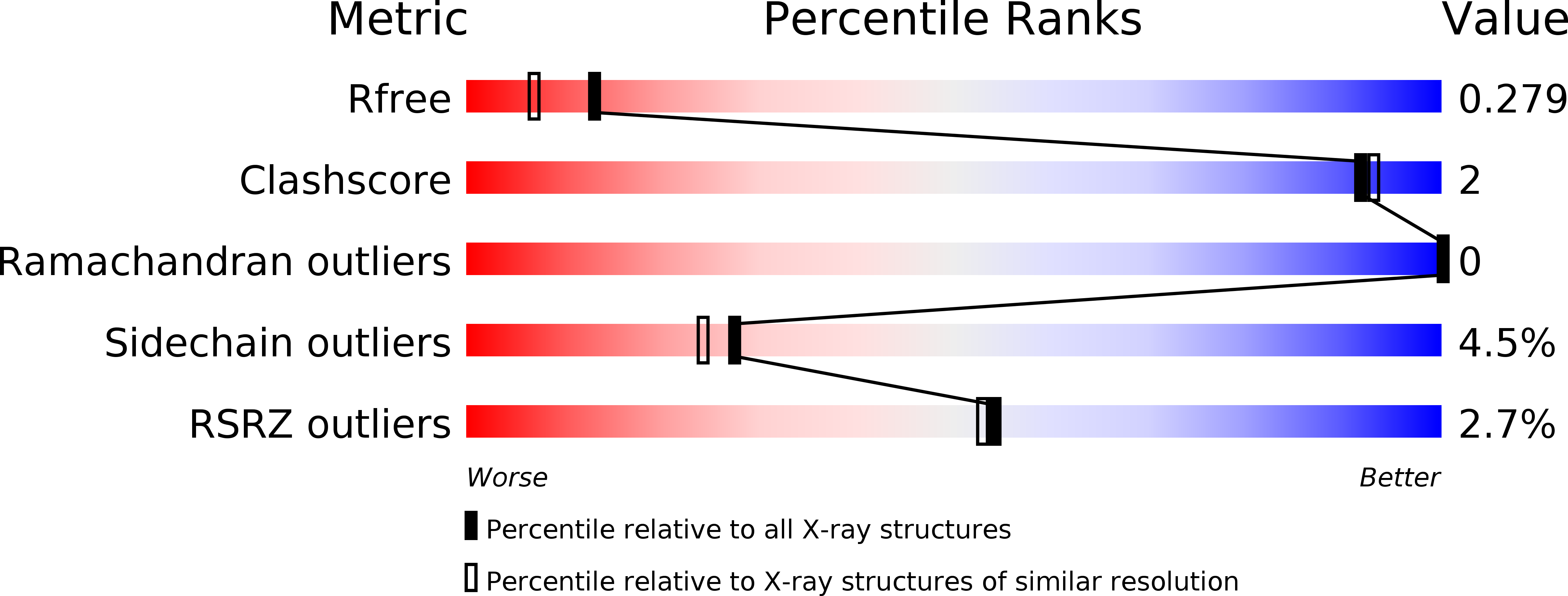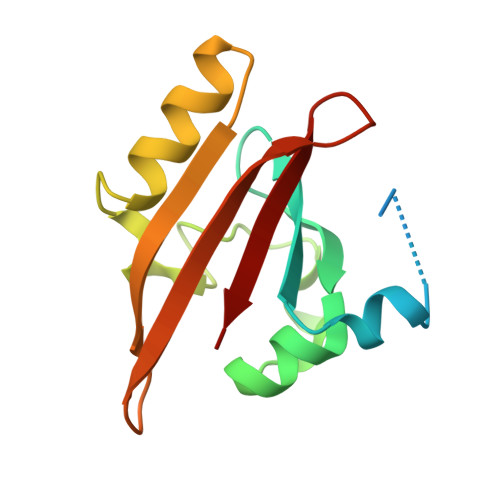Crystal Structure of a Photoactive Yellow Protein from a Sensor Histidine Kinase: Conformational Variability and Signal Transduction
Rajagopal, S., Moffat, K.(2003) Proc Natl Acad Sci U S A 100: 1649-1654
- PubMed: 12563032
- DOI: https://doi.org/10.1073/pnas.0336353100
- Primary Citation of Related Structures:
1MZU - PubMed Abstract:
Photoactive yellow protein (E-PYP) is a blue light photoreceptor, implicated in a negative phototactic response in Ectothiorhodospira halophila, that also serves as a model for the Per-Arnt-Sim superfamily of signaling molecules. Because no biological signaling partner for E-PYP has been identified, it has not been possible to correlate any of its photocycle intermediates with a relevant signaling state. However, the PYP domain (Ppr-PYP) from the sensor histidine kinase Ppr in Rhodospirillum centenum, which regulates the catalytic activity of Ppr by blue light absorption, may allow such issues to be addressed. Here we report the crystal structure of Ppr-PYP at 2 A resolution. This domain has the same absorption spectrum and similar photocycle kinetics as full length Ppr, but a blue-shifted absorbance and considerably slower photocycle than E-PYP. Although the overall fold of Ppr-PYP resembles that of E-PYP, a novel conformation of the beta 4-beta 5 loop results in inaccessibility of Met-100, thought to catalyze chromophore reisomerization, to the chromophore. This conformation also exposes a highly conserved molecular surface that could interact with downstream signaling partners. Other structural differences in the alpha 3-alpha 4 and beta 4-beta 5 loops are consistent with these regions playing significant roles in the control of photocycle dynamics and, by comparison to other sensory Per-Arnt-Sim domains, in signal transduction. Because of its direct linkage to a measurable biological output, Ppr-PYP serves as an excellent system for understanding how changes in photocycle dynamics affect signaling by PYPs.
Organizational Affiliation:
Department of Biochemistry and Molecular Biology, University of Chicago, 920 East 58th Street, Chicago, IL 60637, USA.



















